A doomed Omnimover
Image: Disney
The answer to everything fell into the laps of Imagineers thanks to the 1964 New York World’s Fair. Thanks to transportation innovations crafted for the show-stopping attractions there, a new ride was developed. You know the one I mean and you love it. So, how did my evil Doom Buggy solve the ongoing problem with my iniquitous mansion, you ask? It achieved the effect of a haunted house walkthrough while assuring steady traffic all day, a serious issue that neither Ken Anderson nor Walt Disney solved on their own.
The attraction was known as the Ford Magic Skyway, the highlight of Ford Motor Company’s presentation at the 1964 World’s Fair. Its implementation sounds eerily like a current Epcot experience, Spaceship Earth, with a bit of Ellen's Energy Adventure thrown in for good measure. The rider boarded a Ford vehicle that moved forward on a platform. There was an automatic propulsion system rather than any driving capability. The Ford Magic Skyway took guests on a journey through time, first stopping at the age of dinosaurs before hurtling forward into the future. You can watch a video of the Ford Magic Skyway here, but the narration isn’t quite as polished as your humble Ghost Host’s offerings.
The reason why the ride has such a strong Disney style is that the company’s Imagineers built it for Ford. The car company trumpeted the news that Walt Disney himself had a hand in the design, although that was overstated. He was more actively involved with the Carousel of Progress, but his team of brilliant minds learned a great deal from their interactions with Ford. One of the critical observations gained by their work on Ford’s World’s Fair offering became a hallmark of many future Disney attractions. The Ford Magic Skyway featured a uniform-speed transportation system, and the primary benefit from it was that ride engineers controlled the guest throughput as well as the visual perspective of each visitor. It’s the technology you know today as the Omnimover.
When Disney Imagineers returned from the World’s Fair, they tested several variations of this transportation strategy, delayed only by the chaos of Walt Disney’s death. In a moment of extraordinary innovation, Disney employees intuited that they could fulfill the company founder’s wish of a walkthrough haunted house experience while still directly determining ride capacity. From this inspiration, the Doom Buggy was born. The genius of Omnimover systems is that they move at a set pace, which allows Imagineers to manage the perspective of riders, thereby offering a sort of motion picture experience.
Disney Imagineers even improved on their Ford Magic Skyway premise by rotating the carts at times, thereby changing the set piece. By employing a swiveling Doom Buggy, every interior element of the Haunted Mansion suddenly became available to ride developers. They could move guests into each part of the building in a timely manner while still giving them plenty of opportunities to enjoy all the detailed elements. It was the tipping point that pushed Haunted Mansion out of its decade in purgatory, a place that should remain reserved for your friendly Ghost Host and his friends.
Accessorizing evil
With one of two main problems regarding the Haunted Mansion solved, Disney Imagineers agreed to disagree about the direction of the building interior in an oddly satisfactory manner. Davis and Coats and their co-workers decided that there was no point in choosing between funny and scary. After all, the guests were likely to have the same internal monologue on the subject. So, why not do both? That’s exactly what transpired, which explains the current setup of the attraction. The ride starts by introducing the guest to all the wonders of the Haunted Mansion, which is a tribute to Walt Disney’s desire to have a walkthrough. Then, it provides the scarier elements and set pieces such as the attic and Madame Leota’s prophecies. Finally, the Doom Buggy tips backward and proceeds to the graveyard, where the sillier gags rule the landscape, although some people maintain that it’s Madame Leota herself who signals the change in tone. All the originally contested elements (walkthrough, ride, silly, and scary) wind up included thanks to the brilliant employment of a three-act structure for the story, with everything tied together thanks to witty narration by yours truly.
All that was left was to populate the interior of the building, and the realism of the Haunted Mansion was again impacted by the 1964 World’s Fair. Although audio-animatronics first appeared at Disneyland at the Enchanted Tiki Room in 1963, the company’s greatest advancements came during preparations for their New York showing. Attractions such as General Electric’s Carousel of Progress and Pepsi/UNICEF’s “It’s a Small World” led to profound advances in realistic motion for inanimate objects. By employing this technology, Disney Imagineers could build an entire world of the occult in their long empty mansion at New Orleans Square.
Two Imagineers battle Pepper’s Ghost
Image: Disney
Imagineer Rolly Crump deserves special mention for his character design work. He joined Anderson in populating an entire series of sets at Disney headquarters, and his odd caricatures are legendary. He drafted illustrations of anthropomorphic chairs, voodoo curiosities, and a half-man/half-candle creature. Other ideas such as statue busts that follow you as you move and paintings that change into more malevolent imagery also proved popular. Another Imagineer, Yale Gracey, joined him during the ghoulish creations phase of the process, and their work proved extremely divisive, at least partially because Gracey and Crump also couldn’t quite decide whether their works should tilt toward scary or silly. Still, their imaginative ideas proved fruitful in myriad ways.
One feat Crump and Gracey achieved that changed the way Disney Imagineers viewed their attractions involved a pipe organ. In recreating the ideas of Anderson at their set at Disney’s production office, the two men turned to illusions to bring his vision to life. Their crafty innovations caused Disney to refer to them and other employees working hard on the Haunted Mansion as Illusioneers, for the attraction required numerous tricks to pull off the most special of effects.
Image: Disney
The two Imagineers knew that a pipe organ would prove key to the attraction, whether it were a walkthrough or ride. So, they called on an old parlor trick to craft a signature moment. It’s called Pepper’s Ghost, an illusion that causes objects in a person’s line of sight to move in and out of existence. The catch is that there are two rooms, each of which contains slightly different objects. Through the use of reflections and light, the items in the second room suddenly materialize as if from nowhere, a useful concept for a haunted house attraction. By employing Pepper’s Ghost, Crump and Gracey could elevate the ghostly residents and curiosities in each room into lively, mercurial ghosts capable of appearing and disappearing at will. This premise is on full display during the ballroom dance sequence. So, if you enjoy it, you fittingly have a ghost named Pepper to thank for the entertainment.
Virtually everyone involved with the Haunted Mansion admired the verve and bravado of Crump and Gracey, but the inventions themselves were on the intense side. In fact, they were so scary that the overnight cleaning crews at Disney refused to perform their assigned duties in such a creepy workspace. The two men were told they’d have to clean up after themselves.
Rather than muddle the main event with such a terrifying set-up, Disney himself favored a side attraction known as the Museum of the Weird that would stand inside the Haunted Mansion. The work of Crump and Gracey would highlight what was effectively Disneyland’s answer to a wax museum. These plans were disrupted by Uncle Walt’s untimely death, and they collapsed completely once Imagineers settled on the Doom Buggy technology. Still, the work of the two men lived on in the Haunted Mansion itself. Their drawings and ideas influenced many of the renderings, statues and accoutrements that still exist today. Of special note is the séance chamber featuring Madame Leota’s Cart, but even a variation of the living chair wound up in the attraction.
There was one final illusion Crump and Gracey built that rather famously failed. You’ve no doubt heard of the Hatbox Ghost, a classy gentleman who held a cane in one hand and a hatbox in the other. The two Illusioneers wanted to provide a lingering callback to the Sleepy Hollow mythology once explored for the Haunted Mansion. Their ghastly creature would literally lose his head as the Doombuggy approached, and the rider would receive a shocking surprise when the head reappeared in the hatbox.
Alas, the technology the gentlemen employed for this particular trick failed them. Even before opening day, there were a slew of problems with the lighting, and the lighting was what guaranteed that the head would appear in the box. The Doombuggy came too close to the Hatbox Ghost during its journey, ruining the intended effect. For this reason, this particular character disappeared from the Haunted Mansion after a few months of failed attempts to correct the issue. Disneyland guests wouldn’t see the Hatbox Ghost again until May of 2015, roughly 45 years after he faded from existence.
Welcome home
Image: Disney
In August of 1969, my eternal dwelling, the Haunted Mansion, finally opened its doors to the public in hopes of finding the proverbial 1,000th resident. Its debut came 18 years after Walt Disney originally came up with the premise for a haunted house at Disneyland. It was also 11 years after the initial blueprints and character designs were built by Ken Anderson, eight years after the first promotional flyers were distributed, and six years after the building itself was constructed. Of course, when you’ve been dead for centuries like me, the Ghost Host, time is an arbitrary concept anyway.
After so much build-up, audiences were understandably discriminating about the Haunted Mansion. They expected a ride that would dazzle them, and that’s why the initial reception was mixed. There were technical problems with several parts of the ride, most famously the Hatbox Ghost. Also, some Doombuggy riders complained that it wasn’t scary enough, which proved that no matter which way Disney’s Imagineers chose to go with the attraction, a part of the population would feel disappointment. Had the ride been scarier, others surely would have complained about the Haunted Mansion being unfit for small children.
Over time, people grew more comfortable with the amalgam of funny and scary bits intrinsic to the attraction. The Haunted Mansion eventually became one of the most beloved attractions first at Disneyland and later Walt Disney World and the other Disney theme parks across the globe. Its popularity has translated into a modestly successful Eddie Murphy movie as well as an upcoming Guillermo del Toro project. Filmmakers have even discussed a Museum of the Weird movie in recent years. People never seem to get enough of those 999 scary and funny ghosts. Perhaps I, your Ghost Host, will return one day to tell the stories of some of the most beloved of them, and maybe even the making of Grim Grinning Ghosts, my favorite song. Until then, beware of hitchhiking ghosts.
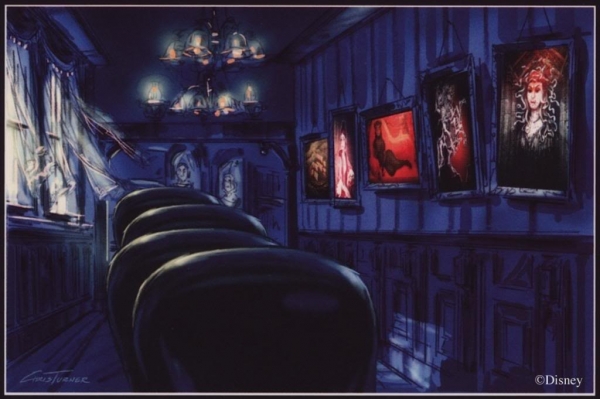
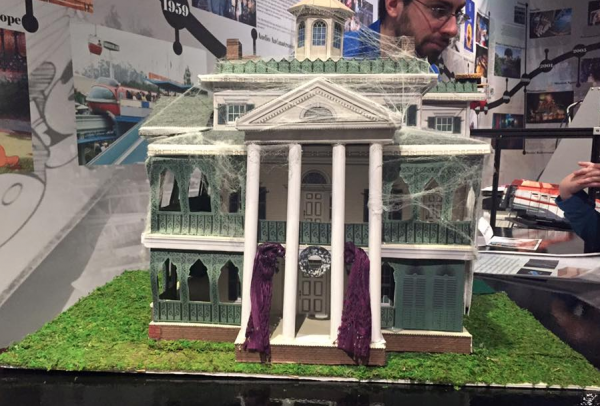
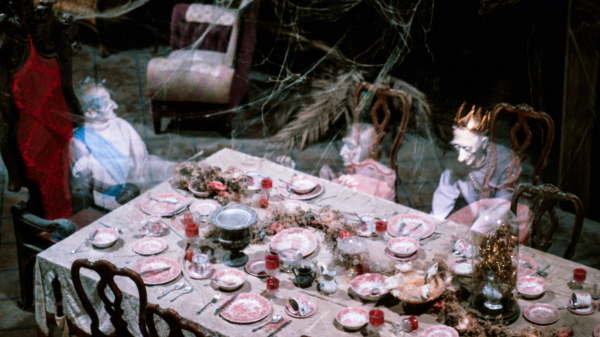
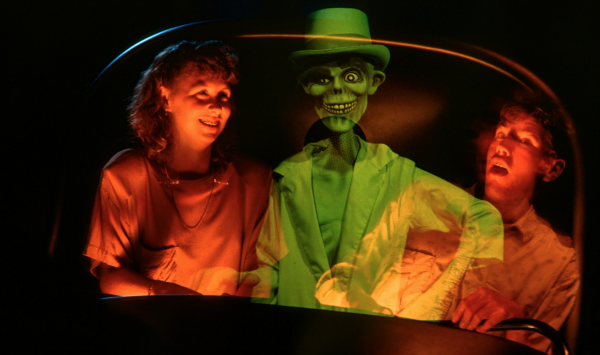
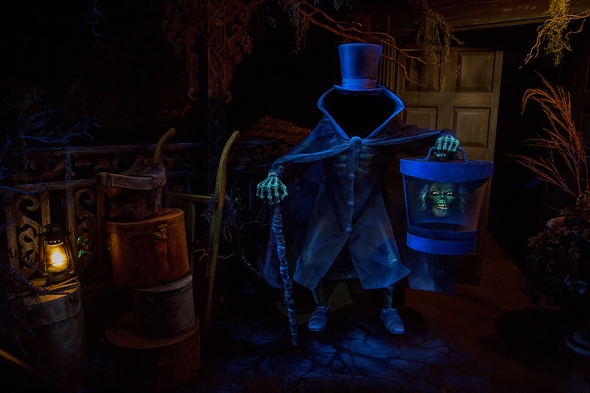
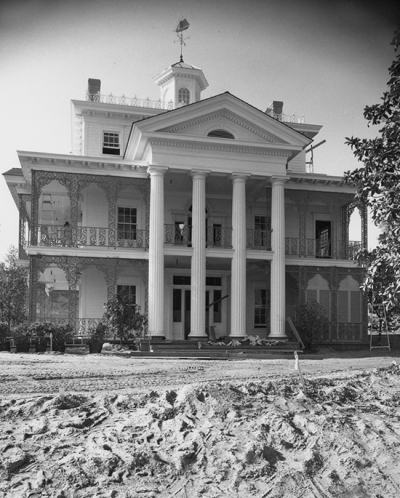

Comments
I enjoyed reading this article. Very interesting to learn how it all came to be, and where the inspiration was drawn from.
This ride really brings me back. I remember riding in the buggy with my dad back when we all went, my aunt and her best friend, also. My dad used to get the tickets through the Southern California Gas Company he worked at for years. My dad being the joker he is. Reached out and knocked on my uncle and mom’s buggee, which was ahead of ours. Lol! Wish the tickets were still as affordable as they were in the good ole days.
I think originally the Haunted Mansion at Disney World had 99 Friendly Ghosts. Then, after an update, they now have 101 ghosts which do not seem so friendly! I really liked the ride better with the "friendly ghosts". I like what they did to the outside tho. I took a behind the scenes tour and it was very good.
What I shall always remember about the Haunted Mansion is that on our first visit to Disneyland, my sister (who was 7) threw up as we exited the ride. Disney clean-up was right there on the spot to make sure we were okay, and we headed back to the motel for her to take a nap and my cousin and I to play in the pool.
Thank you for such an interesting read. (You might want to go back and change something though, you wrote 997 ghosts early in the piece. I am sure that is a typo.) This ride was one that was described to me by friends when I was a little kid. It was one of the burning reasons I wanted to go to the Magic Kingdom. When I finally went (as a teen) The Haunted Mansion was the first attraction I went on, and I was not disappointed! It took me a few years to figure out the Pepper's Ghost effect, which is brilliant! Now, my goal is to ride the Mystic Manor ride. I just hope I don't have to wait too long to see it.
Hi Kenneth,
David was actually right with the 997 thing, I think...it doesn't include the bride and groom. Adding those two in brings it up to 999.
Nick